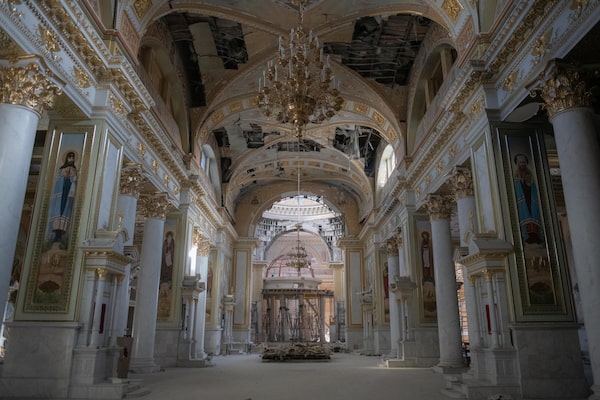
The roof of Odesa's Transfiguration Cathedral was still riddled with holes when The Globe visited in February, about seven months after a Russian missile hit it.Photography by Olga Ivashchenko/The Globe and Mail
Seven months after a Russian missile smashed into the Transfiguration Cathedral, in the heart of UNESCO-listed historic Odesa, workers are still unearthing artifacts as they sift through the rubble.
One worker found a large Bible in the ruins of an enormous hole next to the altar on a sunny day in early February. He reached up and handed it to Rev. Myrsoslav Vdodovych, the church’s chief priest.
As he held the book, the pages unfurled, exposing a ragged tear in each of them, evidently made by a single piece of shrapnel as it ripped through the book. Many of the pages had been charred by fire that ravaged the building’s cavernous interior moments after the missile hit. “When we came to the cathedral, it was burning, and we tried to save whatever art and objects we could,” Father Vdodovych said. “Obviously, we could not save everything.”
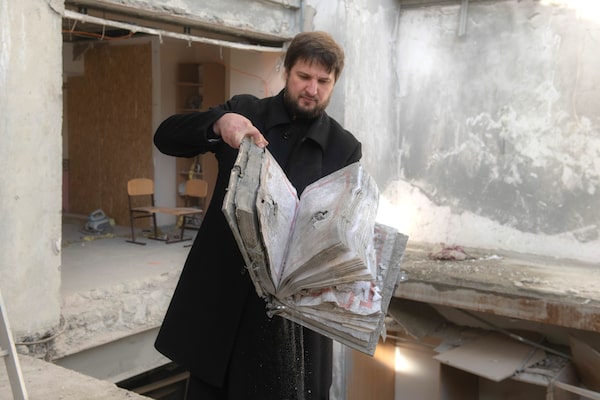
Father Myrsoslav Vdodovych was not able to save all the church's treasures after the missile struck.
The attack on the cathedral in the early morning of July 23 shocked Odesites. It told them that no building in Ukraine, not even a church with civilians inside, was immune to Russian attack.
It also gave them a sense of hope. The church is now being rebuilt – though far too slowly for Father Vdodovych’s liking – even if Odesites are well aware it could be hit again as the war enters its third year. They know that their city, equipped with a strategically important deep-water port on the Black Sea, is a high-priority target for Russian missiles and drones.
The attack on the city in July was not entirely unexpected. Only six days earlier, Russia had abandoned the United Nations-brokered initiative that had been negotiated in the summer of 2022 to allow ships laden with grain to travel from southwest Ukraine to the Mediterranean. Russia had claimed that safe-corridor rules, and the inspections that went along with them, were not to its satisfaction.
Retribution seemed inevitable, and the fears of Odesites proved warranted. Russia hammered the port of Odesa on July 19, and again on July 23, both times using supersonic cruise missiles. On the latter date, a missile believed to be a P-800 Oniks tore through a wall of the Transfiguration Cathedral, one of the biggest Orthodox churches in Eastern Europe.
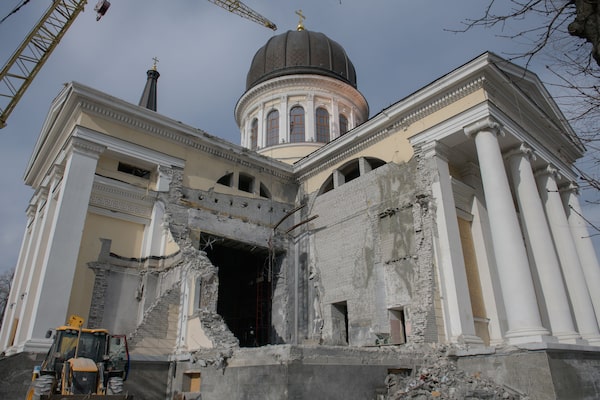
Damage to the cathedral is still hard to miss on the outside, but much of the building's overall structure survived.
The horrific blast removed about half the roof, sent the entrance doors – which weighed 300 kilos apiece – flying off their hinges and spread fire throughout the interior. About two-thirds of the frescoes were destroyed. Incredibly, none of the five civilians inside the church at 1 a.m., when the missile hit, were killed.
Father Vdodovych, 41, was home when he received a phone call immediately after the attack and jumped in his car even though the air-raid sirens were sounding. Ten minutes later, he was inside the cathedral with a few others, including the mayor of Odesa. “I saw that the church was on fire and I ran inside,” he said. “I was shocked at first, but I did not have a lot of time to react. I had to save the art.”
Fears of a second attack prevented Odesa’s firefighting trucks from reaching the church until almost an hour later. By then, much of the interior had been scorched, but the structure itself, with its hefty walls, remained largely intact.
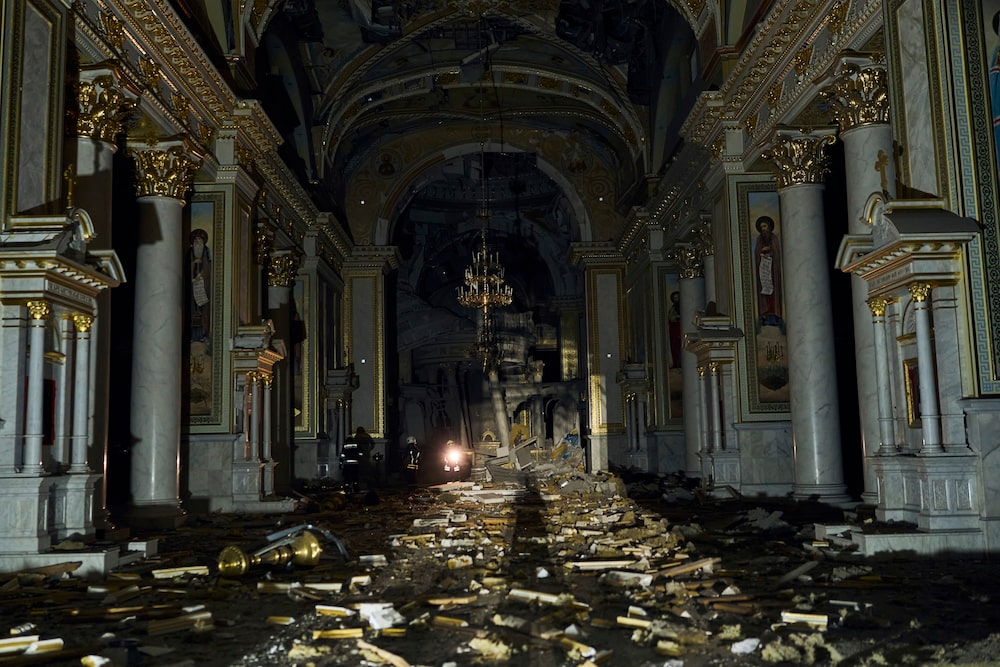
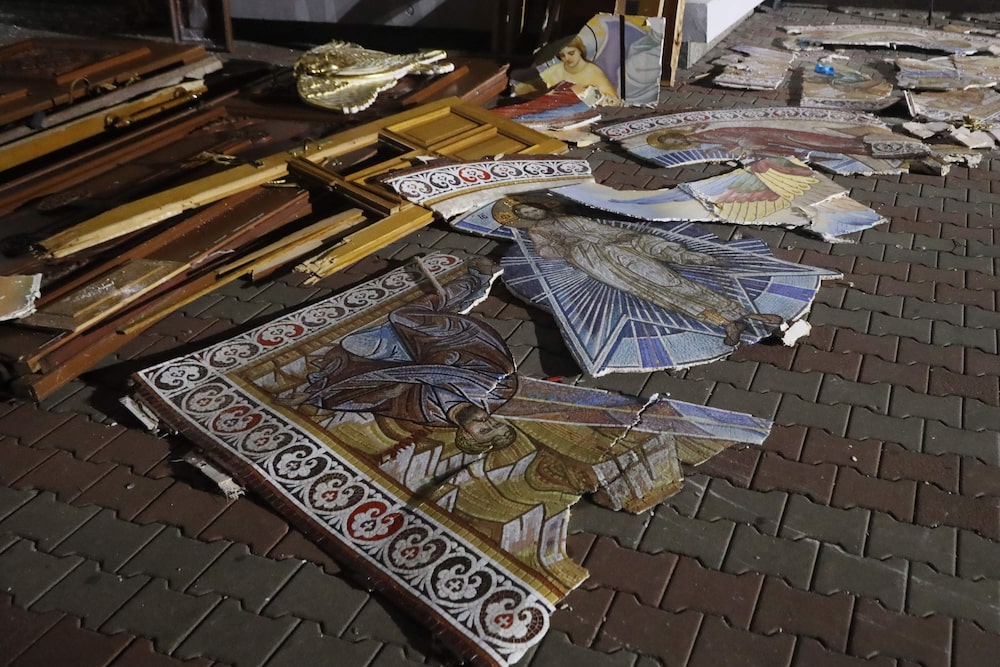
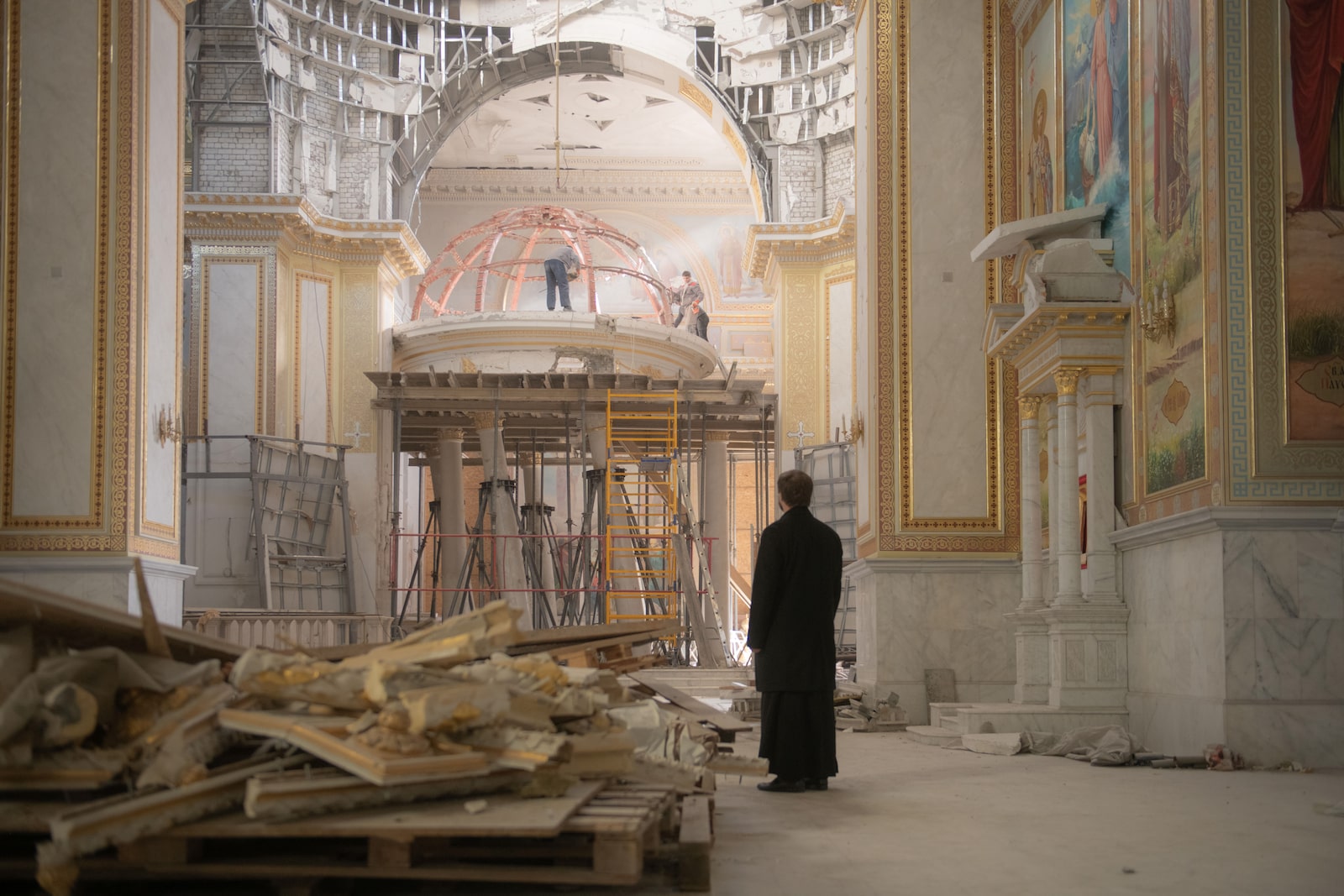
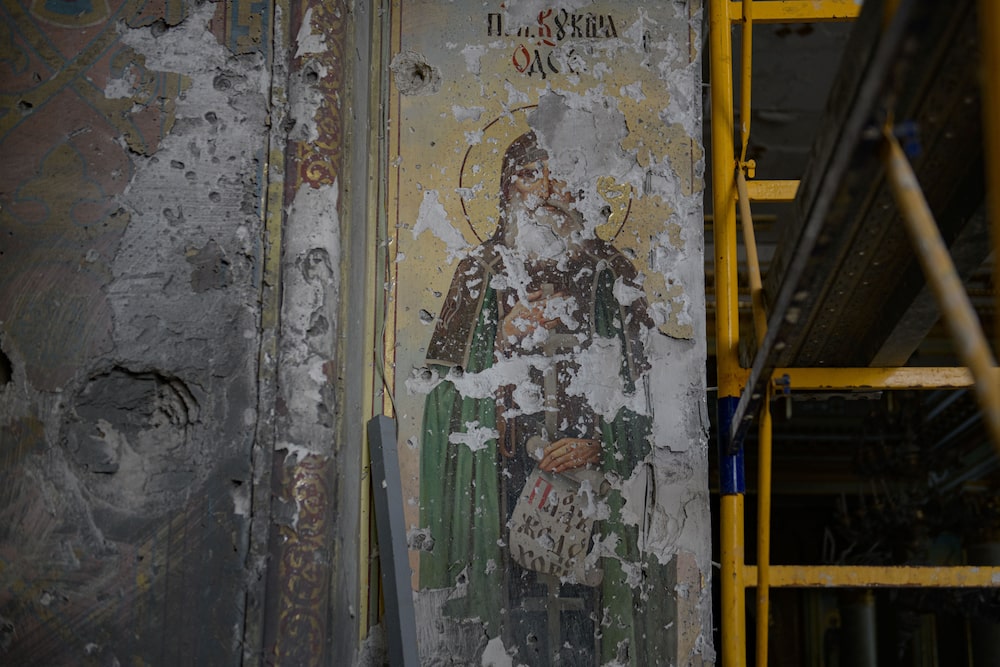
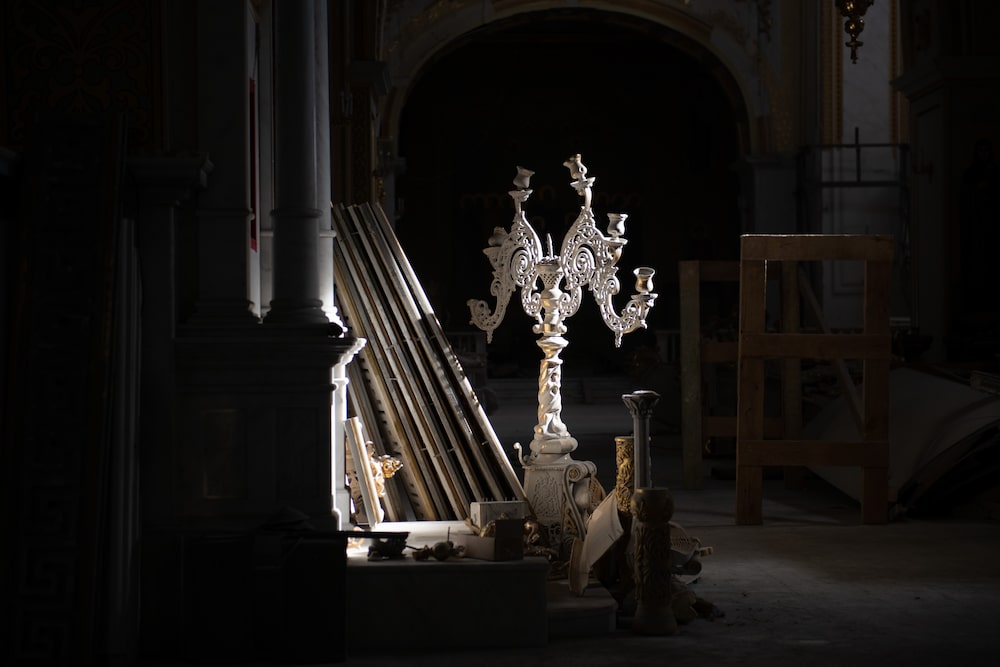
UNESCO, the UN’s cultural agency, said it was “deeply dismayed and condemns in the strongest terms” the attack on the historic centre of Odesa, including the Transfiguration Cathedral. The cathedral itself was not listed as a World Heritage Site because it is a fairly modern structure, despite its classic, elegant appearance.
The original cathedral was founded in 1794 and became the most important church in the Black Sea area of what was then the Russian Empire. It was destroyed in 1936, during the campaign against religion ordered by Soviet leader Joseph Stalin, and rebuilt after the fall of the Soviet Union in 1991. The new church was consecrated in 2010 in a ceremony that was presided over by Patriarch Kirill of Moscow, the Russian Orthodox bishop who would become infamous in the West for blessing Russian soldiers fighting in Ukraine, promising that their sins would be “washed away” in exchange for going into battle.
Chiara Dezzi Bardeschi, the UNESCO liaison officer in Ukraine, said that the cathedral “has important religious and cultural significance” even though it is not a UNESCO-listed building. She decried the attack on the cathedral, one of 49 cultural sites in Odesa and nearby to have been damaged since the start of the war.
Shortly after the attack, the Italian government offered to provide funding for the church’s repair, but no money arrived. “They talked about it and did nothing,” said Father Vdodovych, who guesses that a full restoration would cost about US$10-million.
In mid-February, the Italian embassy in Kyiv said that Italy would provide €500,000 (about $730,000) to pay for the restoration of the roof so that the cathedral could once again hold liturgies. “I started working at this church in 2004, so I am seeing it rebuilt twice,” Father Vdodovych said. “That’s enough. What is important is that this war ends.”
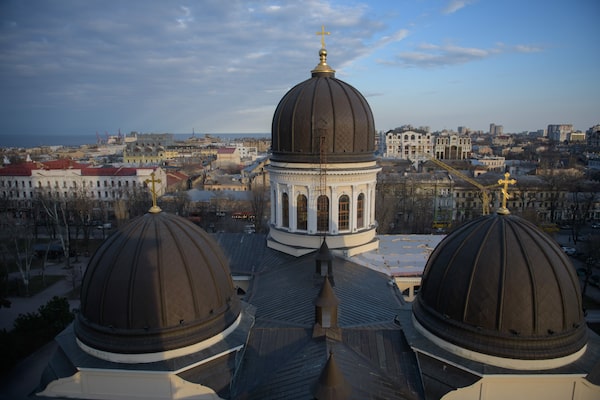
War in Ukraine: More from The Globe and Mail
When Ksenia Koldin was separated from her brother in a Russian-occupied area of Kharkiv, she went on a mission to get him out of the network of “summer camps” Russia has built to assimilate Ukrainian youth. The Globe’s Mark MacKinnon shares their story. Subscribe for more episodes.
How Ukraine overcame a naval blockade and devastated seaports to resume crucial agricultural exports
How cheap drones are transforming Ukraine’s war against Russia
Ukraine’s oligarchs are no longer considered above the law
Analysis: Zelensky dismissing Ukraine’s top general is his most consequential decision so far